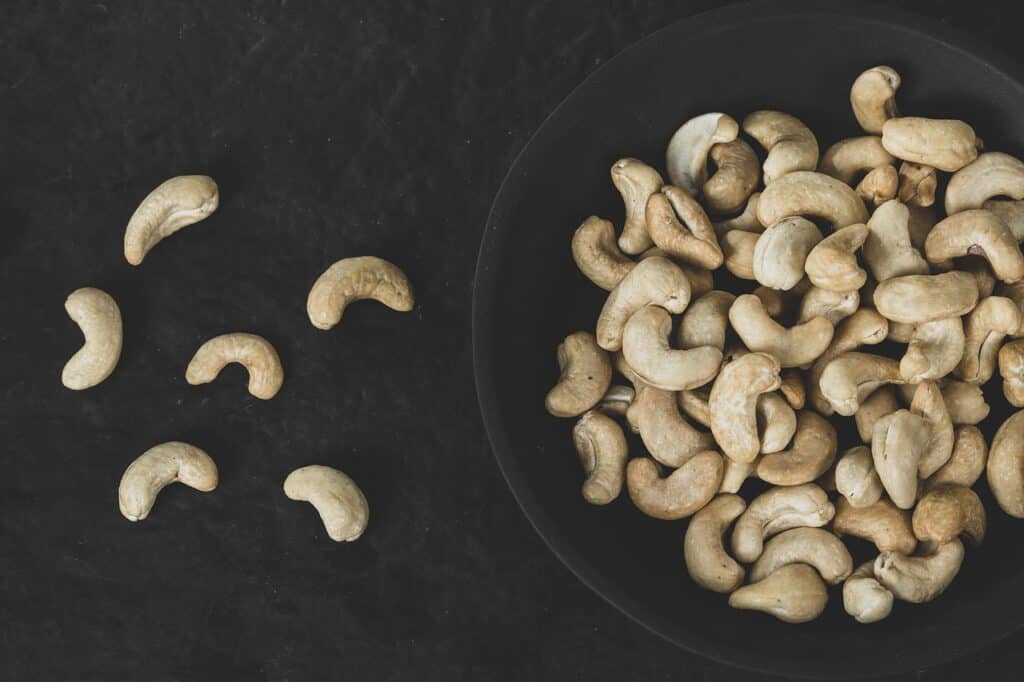We hope you like the products we recommend! Just so you know this post contains affiliate links and I will be compensated if you make a purchase after clicking our links.

Our cat loves sneaking around after we’ve prepared a meal looking for something we might have missed, something she might want to eat. Mostly, she just wants a sniff but as she has a thing for butter, oil, and peanut butter, so we have to be careful about leaving used utensils next to the sink.
Like most owners, we indulge her every so often but we’re always careful about what we let her have a taste of. Human foods might look harmless but they can be toxic to cats.
Onions, for example.
We use cashews a lot as both a snack as in our cooking so we wanted to find out: cats can eat cashews? Or do we need to be more careful about where we leave our uncovered bowls and open packets.
Can Cats Eat Cashews?
Cashews aren’t toxic to cats. If your cat has eaten one or even several, then don’t panic – they’ll be fine.
But you shouldn’t feed your cats cashew nuts nor should you encourage them to eat then. Cashews are high in fat and low in protein which can be bad news for a cat’s health.
One ounce (28 grams) of cashews provides 12 grams of fat which is a lot for a pet that in the wild would only eat a fraction of this across entire meals – think how much fat you’d get from a small bird or mouse.
For cats, nutritional values should be the other way around: high protein and low fat.
Cats that eat a lot of cashews are at risk of being overweight or obese. It will also make them more prone to heart disease and diabetes and is believed to lead to pancreatitis, too.
Owners often mean well when they give their pets human snacks, but it can be dangerous, even fatal, to give a cat something other than its regular diet.
If you’d like to give you cat a snack or a reward, we’d recommend choosing from the wide range of cat treats available to buy. They’re not always healthy, but they’re not toxic either and will have better nutritional content than human foods.
Related Posts: